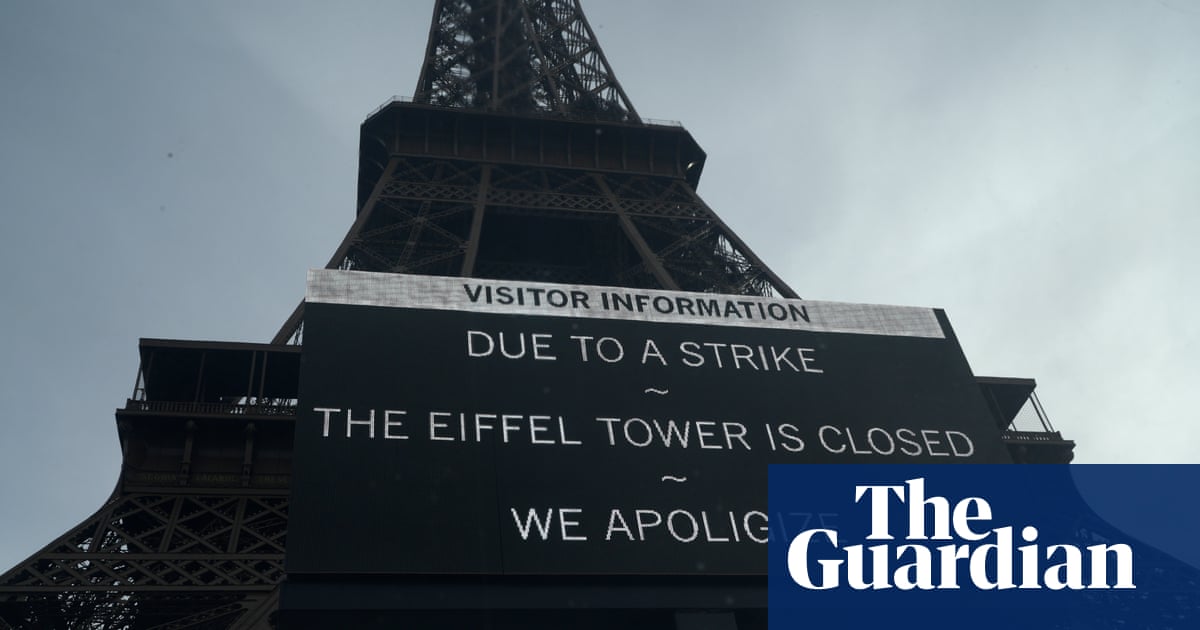
The Eiffel Tower was closed to the public on Wednesday after staff went on strike on the 100th anniversary of the death of its creator, Gustave Eiffel.
Disappointed tourists who had booked tickets to access the 134-year-old monument were told it was shut and they would be contacted by email.
The powerful CGT union said the industrial action taking place ahead of contract negotiations with City Hall, which owns the tower, was in protest over “the current way it is managed”.
Union leaders claim the operating company, SETE, is “heading for disaster” because its business model is “too ambitious and unsustainable” and based on an over-optimistic estimate of future revenue from ticket sales and an underestimation of spiralling maintenance and repair costs.
The Eiffel Tower, one of the world’s most visited attractions, drew nearly 7 million visitors a year – three-quarters of them foreign tourists – before the Covid pandemic. After enforced closures and travel restrictions were lifted the number rose to 5.9 million visitors in 2022.
The CGT says SETE’s estimation of its future budget is based on it drawing 7.4 million visitors every year, a figure it has never previously reached and that the union views as unrealistic.
On Wednesday, the esplanade at the foot of the tower was still open to the public. A light and sound show, overseen by a DJ and featuring artistic music and dance performances, to be broadcast from the first floor of the tower as well as on social media and television to mark the centenary of Eiffel’s death on Wednesday evening was pre-recorded and was not affected by the strike, SETE said.
Gustave Eiffel was 91 when he died on 27 December 1923. A visionary entrepreneur and brilliant structural engineer, he had just finished building an iron and steel skeleton for the Statue of Liberty in New York with Eugène Viollet-le-Duc of Notre Dame Cathedral spire fame when approached to create a symbol of French industrial savoir-faire for the 1889 Universal Exhibition.
The 10,100-tonne iron tower he came up with was only ever intended to be a temporary structure to be pulled down and scrapped in 1909. Some, including the writers Guy de Maupassant and Alexandre Dumas the younger, could not wait to see it go, describing it as “useless and monstrous” and an affront to “French taste” even before the foundations had been laid.
City officials decided to spare what became known as the Dame de Fer (Iron Lady) after realising the tower, then the tallest building in the world, could be used as a radiotelegraph and weather station. It has since become the French capital’s most famous landmark, rising 312 metres (1,023ft) above the city.
The top floor of the tower is due to close next month for an annual renovation lasting several weeks.











